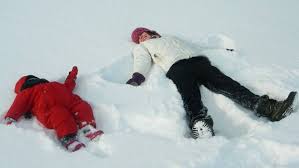 September 2017
September 2017
There is no reason for common area floors, walls and furniture to be exposed to winter elements and damaged during cold weather months. Salt and other outside elements spreading through a building and thus damaging common areas is preventable.
Salt can damage finishes on floors, walls and furniture.
A common solution is to utilize a dirt trekking system that prevents outside elements from being trekked indoors. This generally refers to matting placed at entranceways, along corridors and in elevators. Matting also prevents these areas from becoming slippery when wet and increasing the risk of slip and falls.
High priority areas for matting are those with the most foot traffic including building entrances inclusive of parking areas.
Providing a minimum of 15 feet of matting or carpet at an entrance can trap up to 85% of dirt being brought into a building. Since about 90% of all foot traffic travels from the front door of a building to a reception area and to or from a mailroom, matting in these areas is also important.
Slip and falls can be reduced when a floor is covered from the building entrance to the elevator.
Quality and properly maintained matting helps provide a positive impression to residents and visitors. It is designed to help clean shoes when walked on while absorbing dirt and water.
Keeping Matting Clean
 Poor quality or poorly maintained matting may look beat up after a year.
Poor quality or poorly maintained matting may look beat up after a year.
Once salt gets into a carpet it can become difficult to clean. High traffic areas should be vacuumed daily. Spot removal may be necessary to remove stains.
The most effective way to clean matting of salt and slush, and prolong its life, is hot water extraction. Heat will activate cleaning chemicals so they work more effectively. Frequency of cleaning will depend on foot traffic and severity of weather. Monthly hot water extraction cleaning is suggested during a severe winter with increased salt and slush.
Carpets should be well vacuumed before cleaning is undertaken.
Matting can be purchased or rented. When rented, matting may be changed weekly or more frequently during more severe weather.
Purchase and Storage
 Winter matting should be ordered by August to ensure it is available by early October.
Winter matting should be ordered by August to ensure it is available by early October.
Mats should be clean and dry when stored. They should be stored upright to avoid damage from items stacked on top during summer months. Matting that has been crushed will have a wave-like appearance which makes installation more costly and time-consuming.



